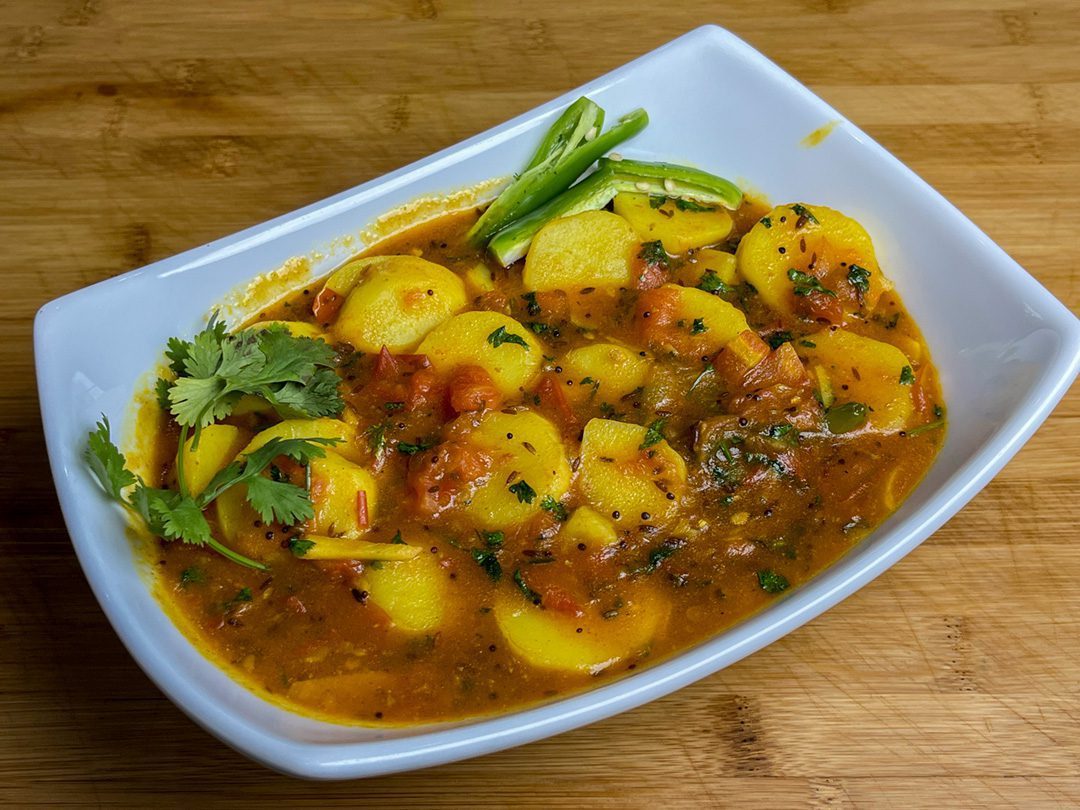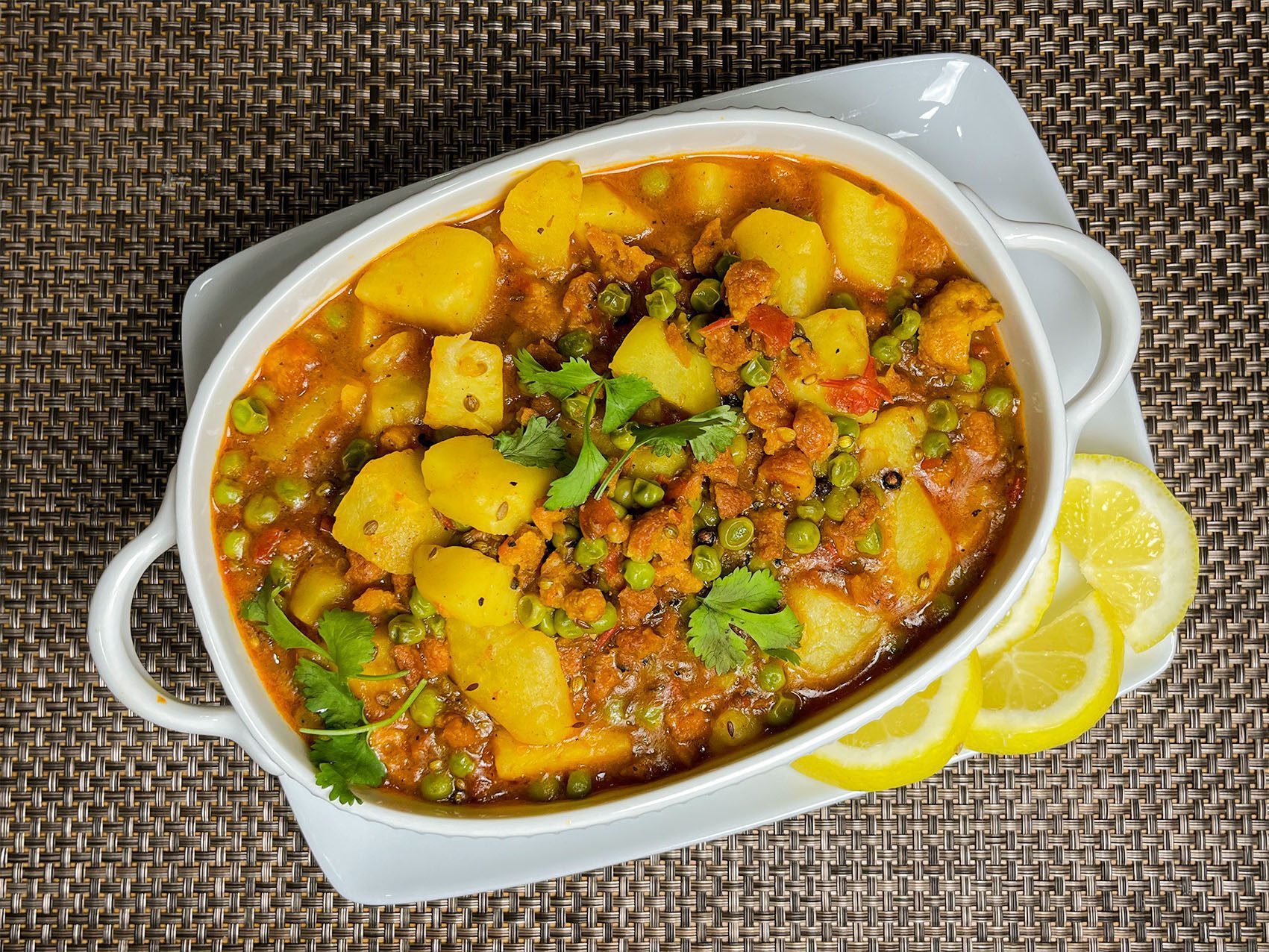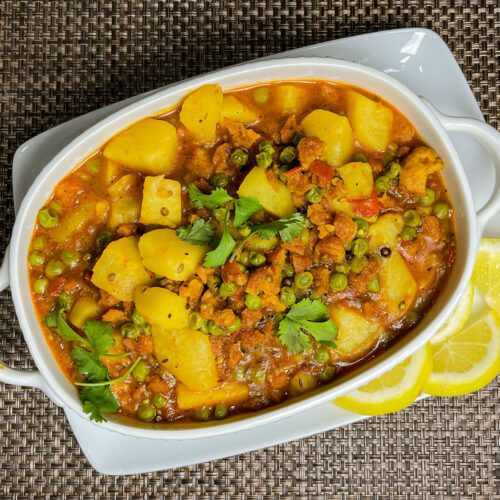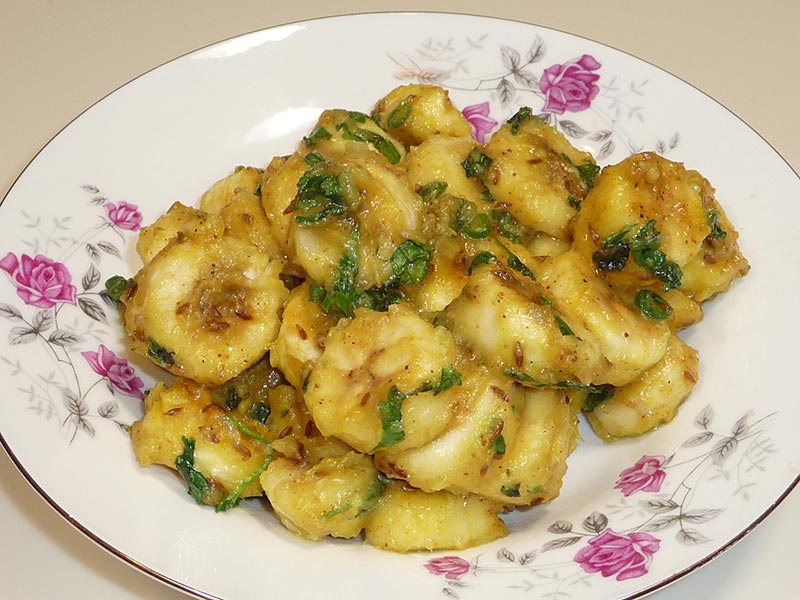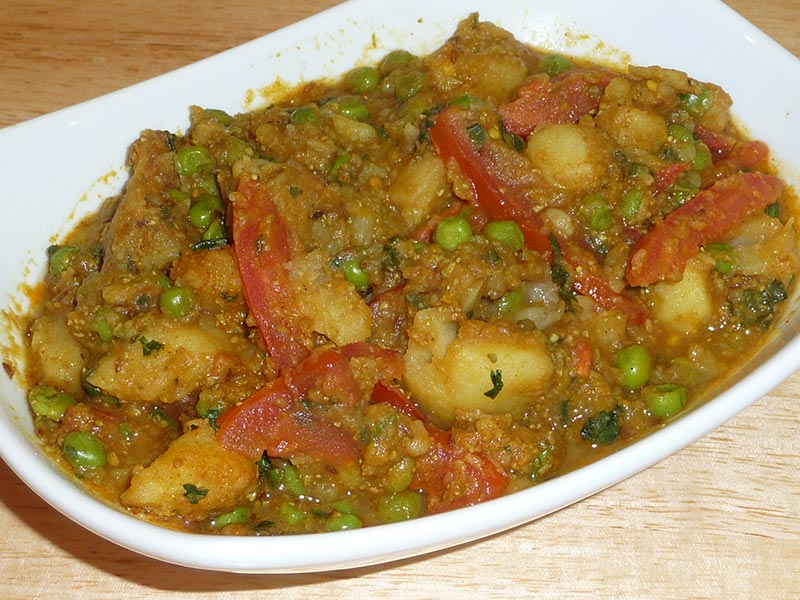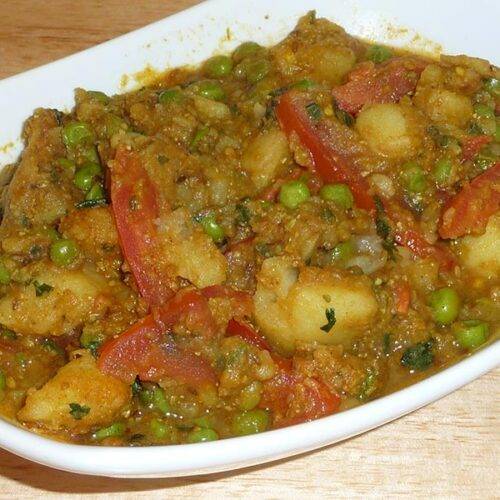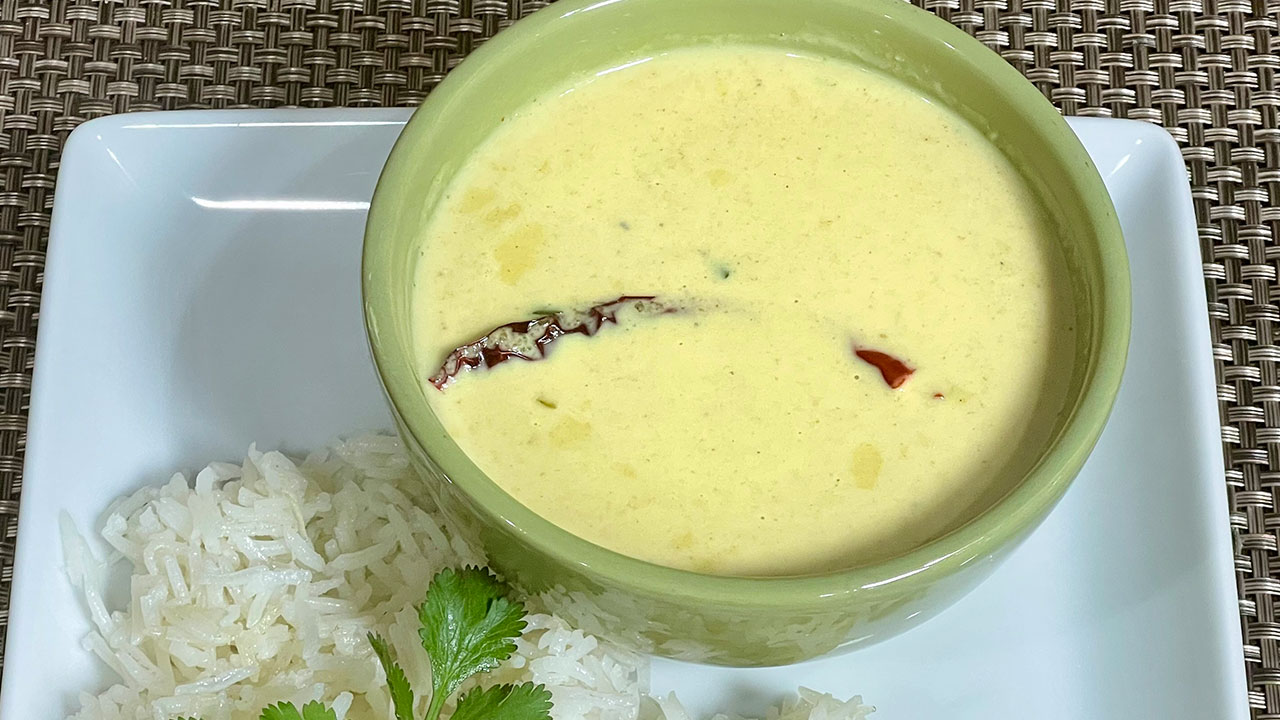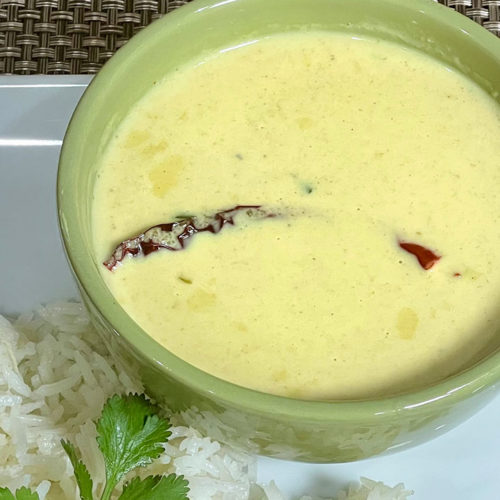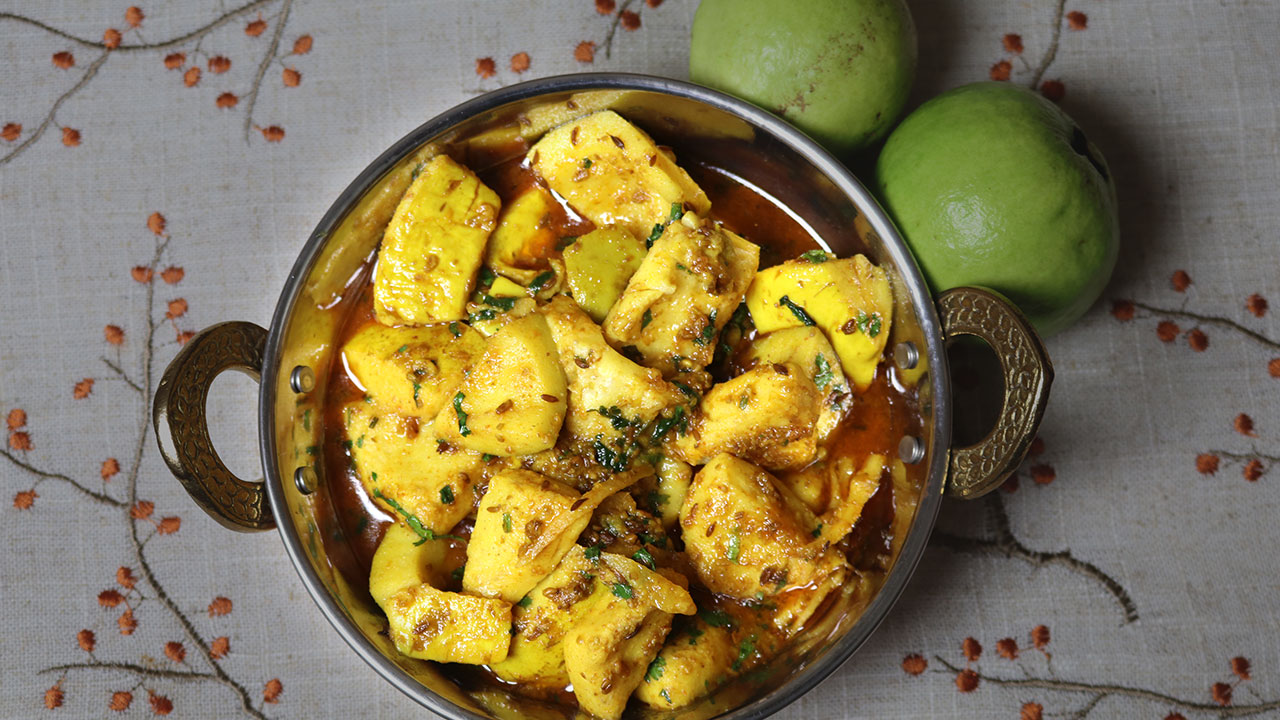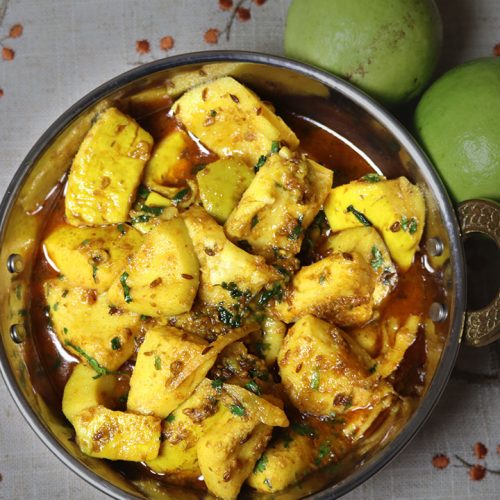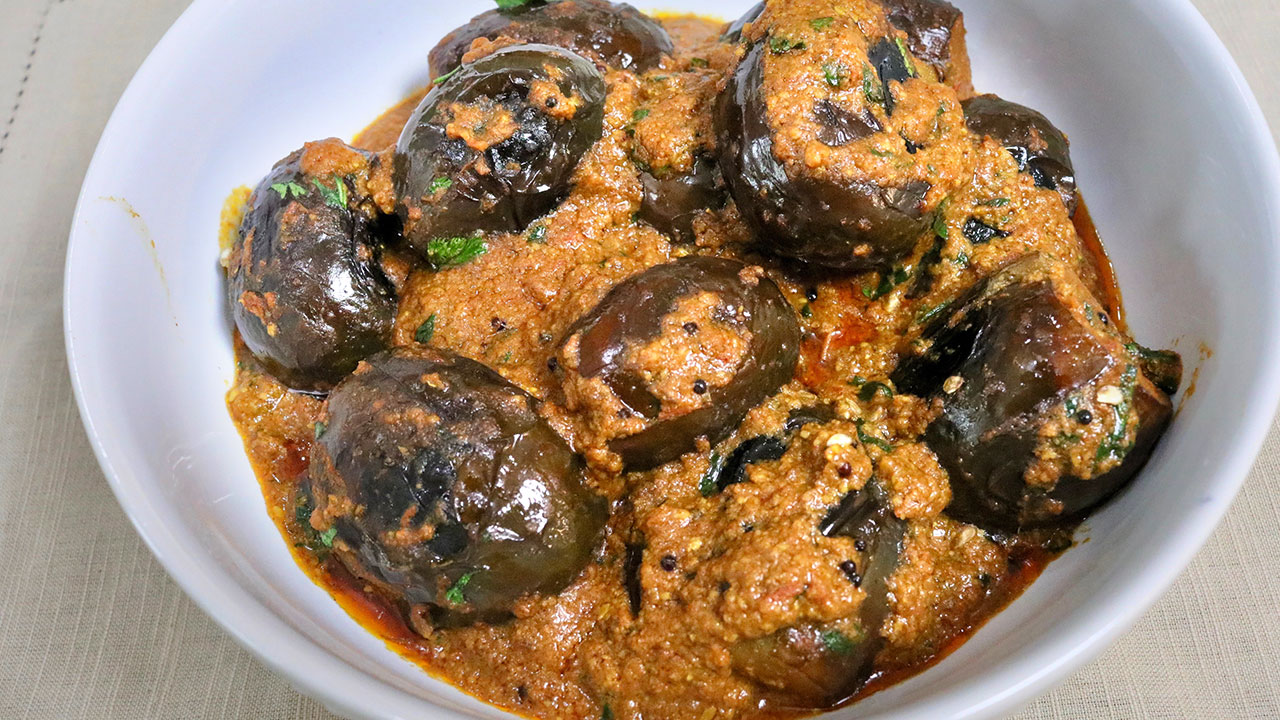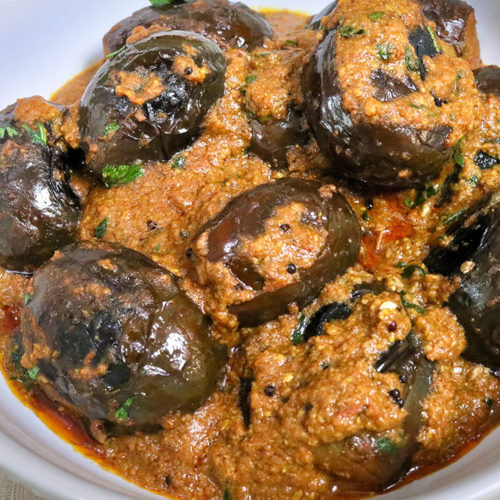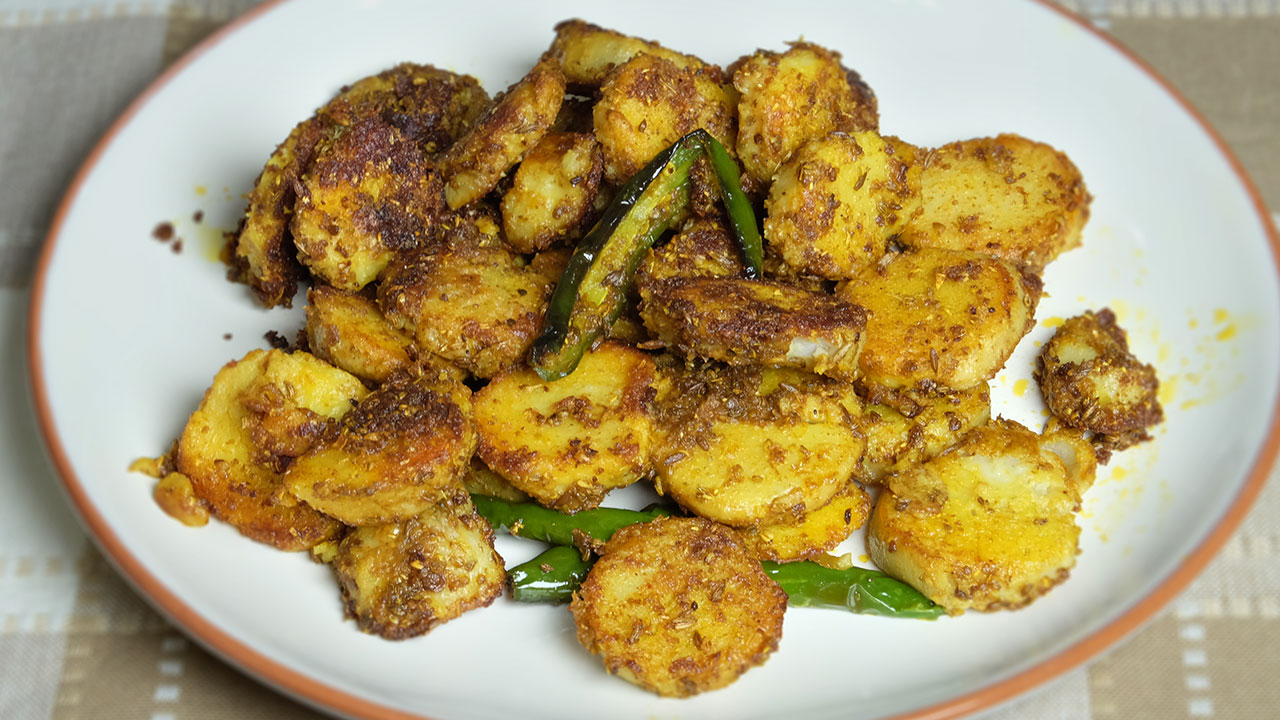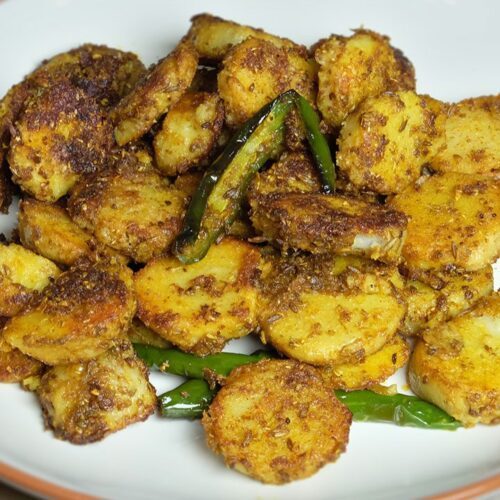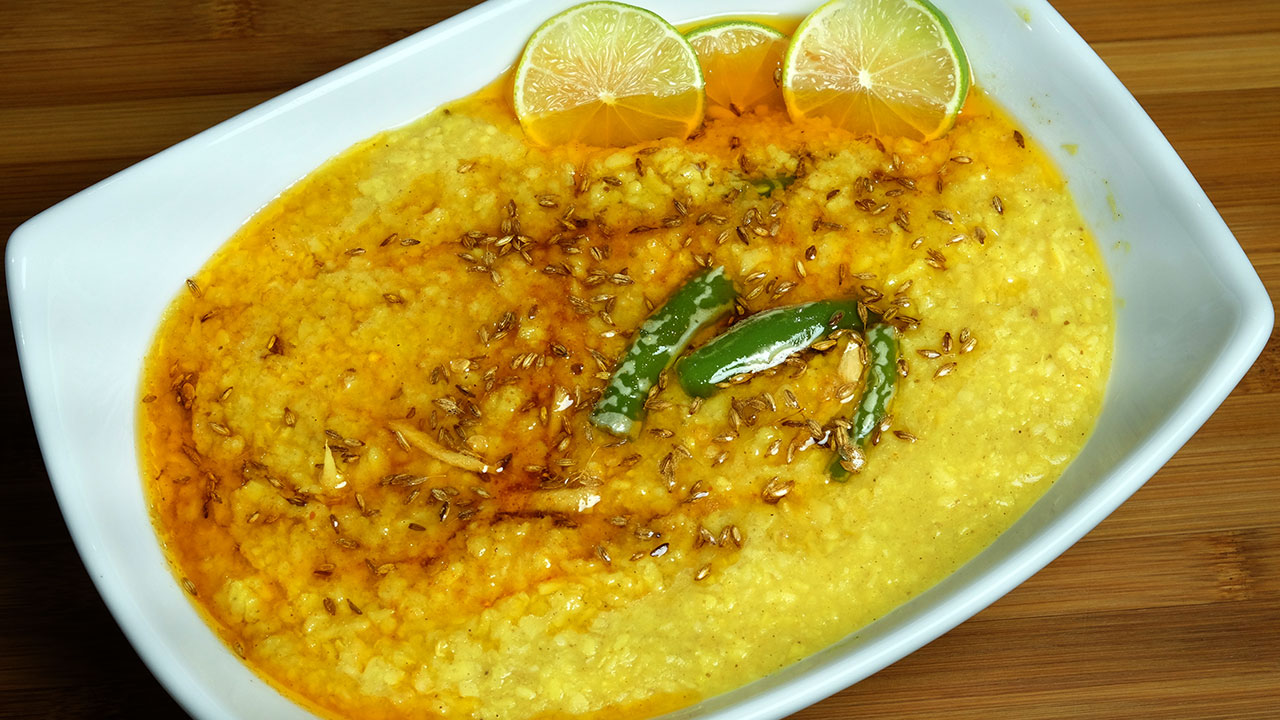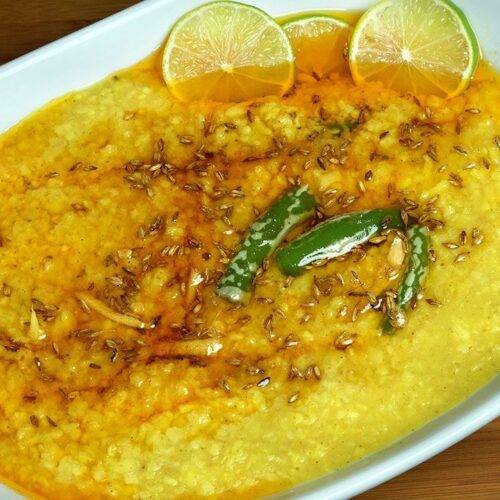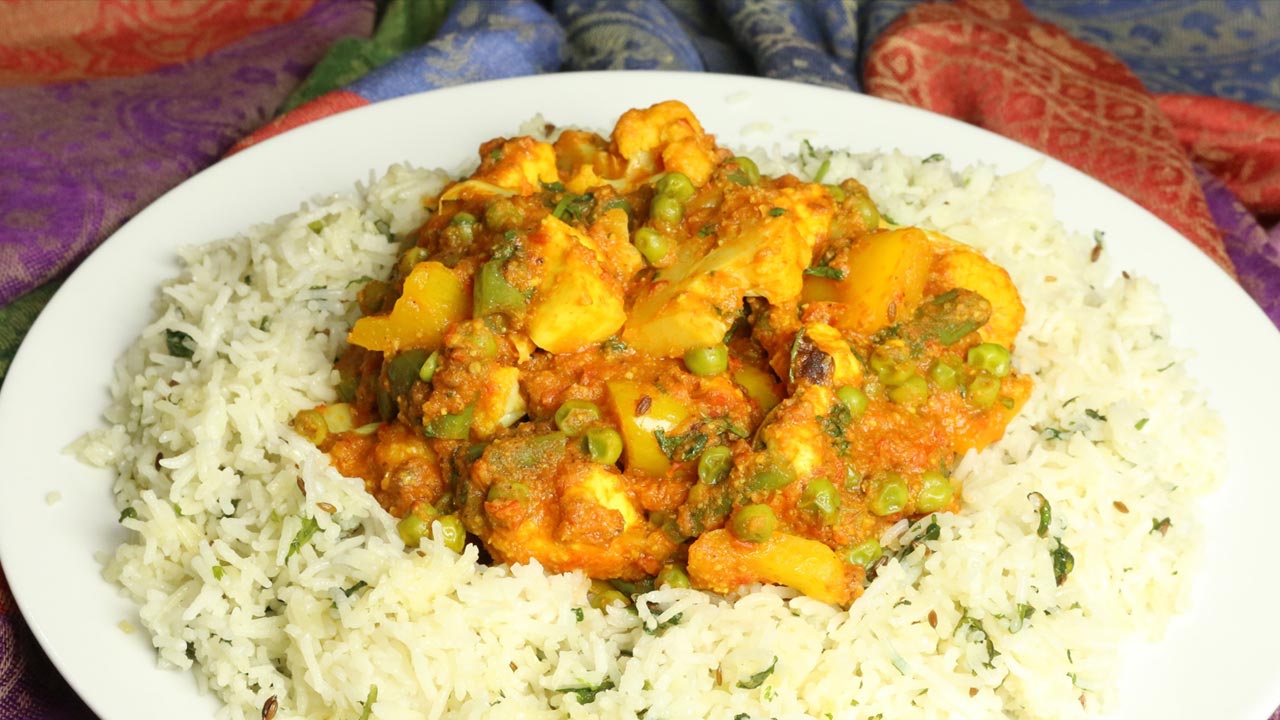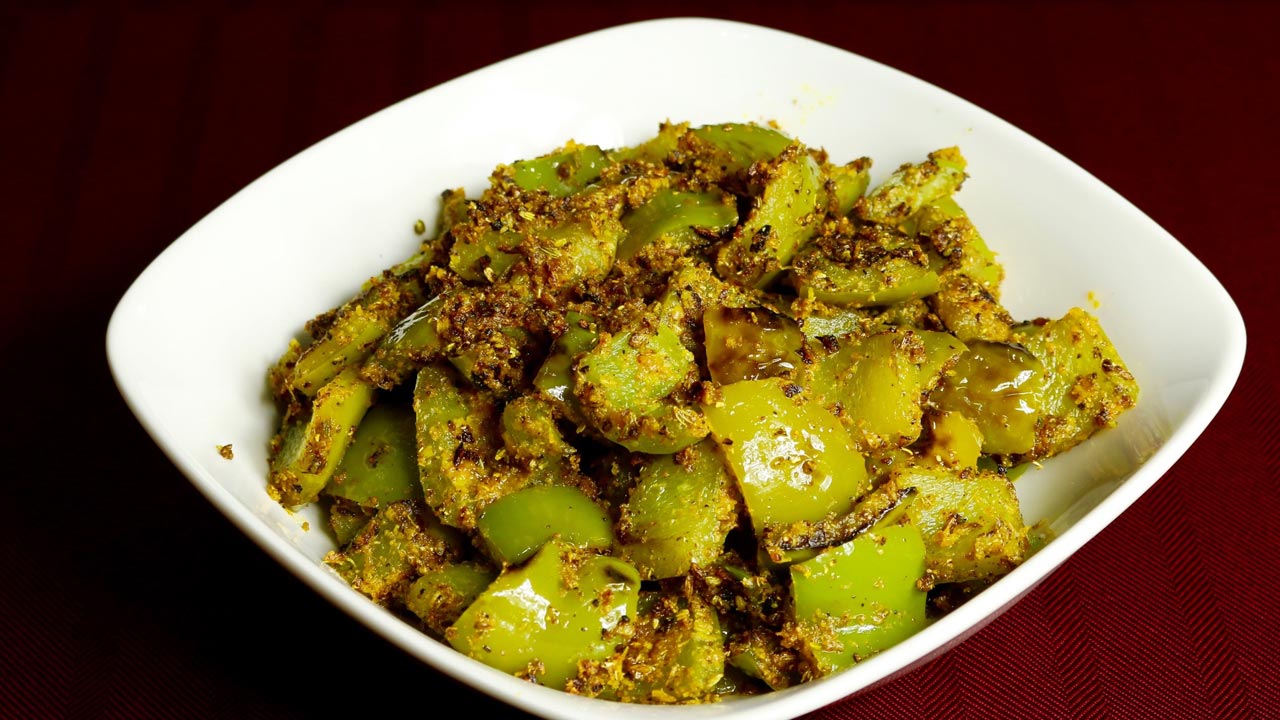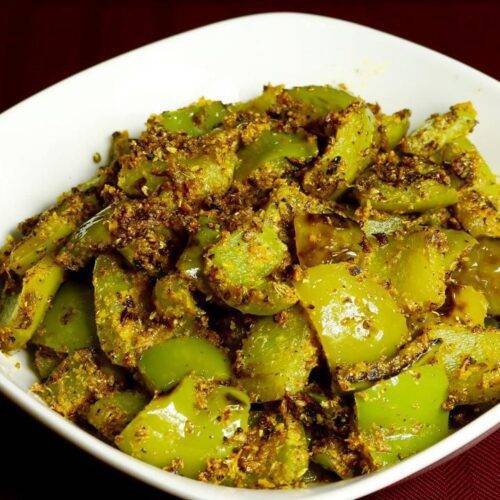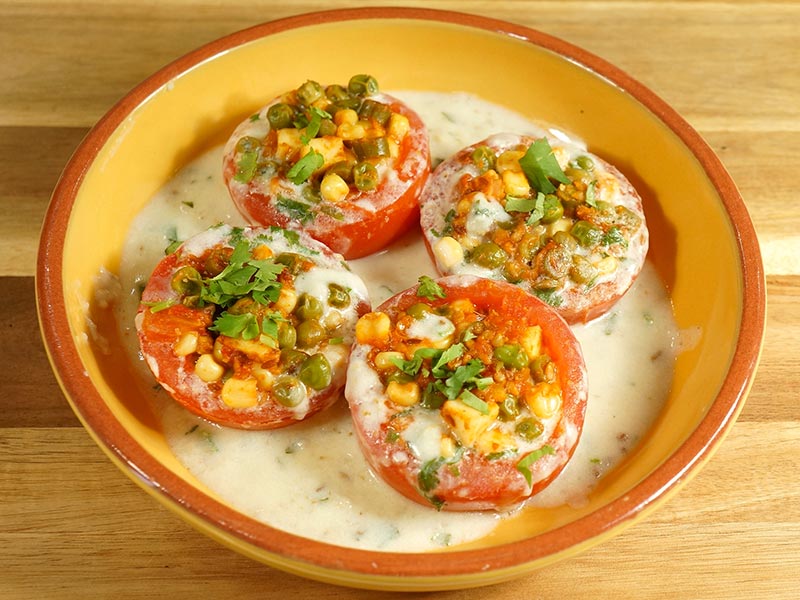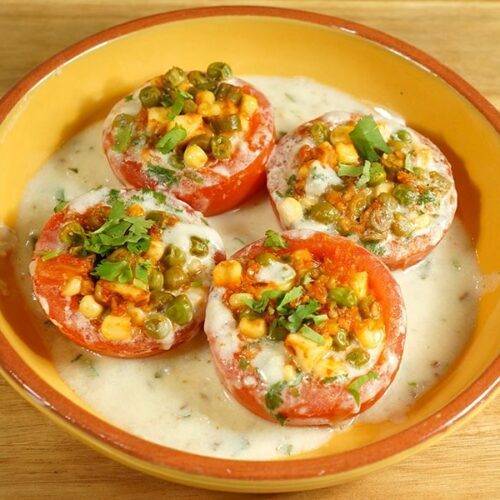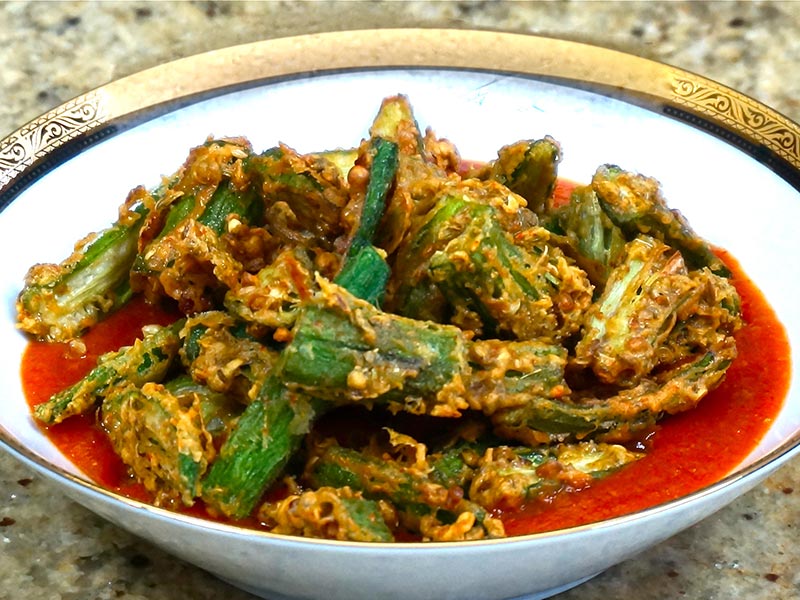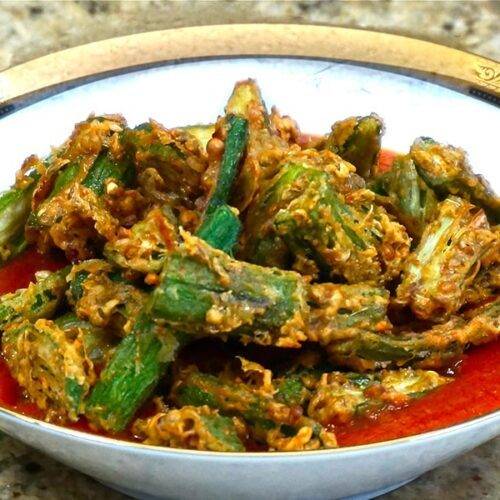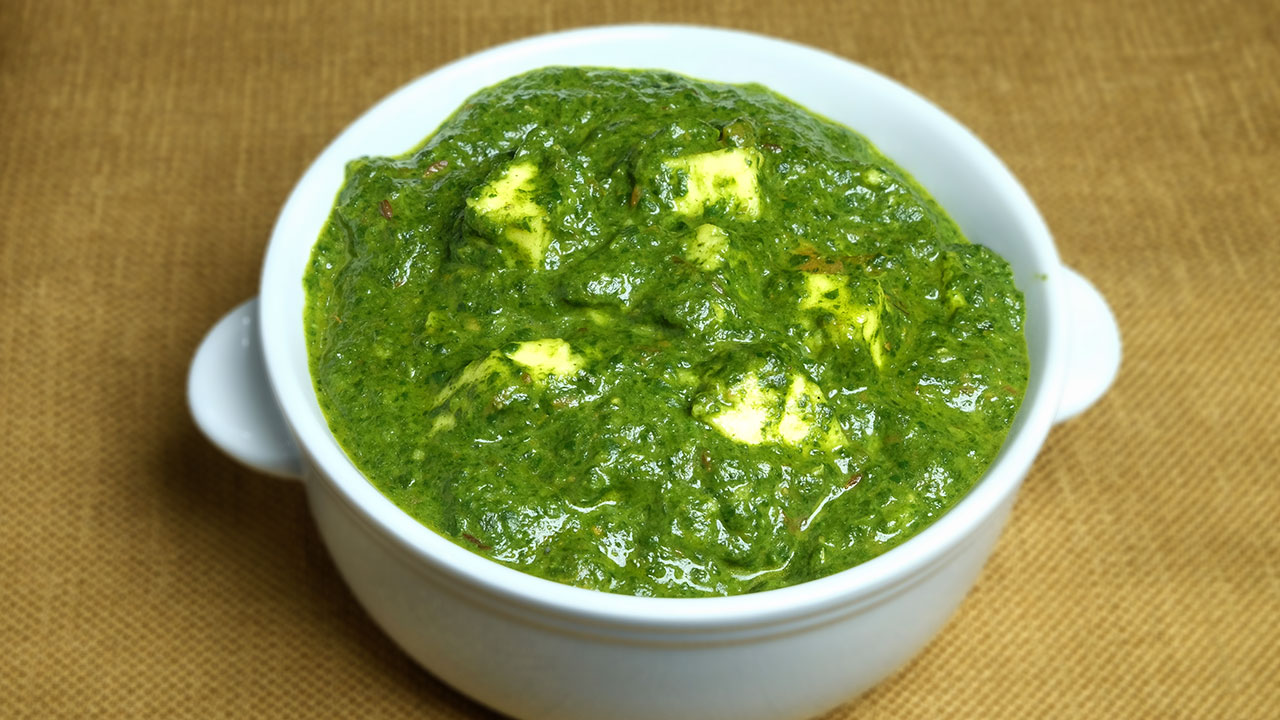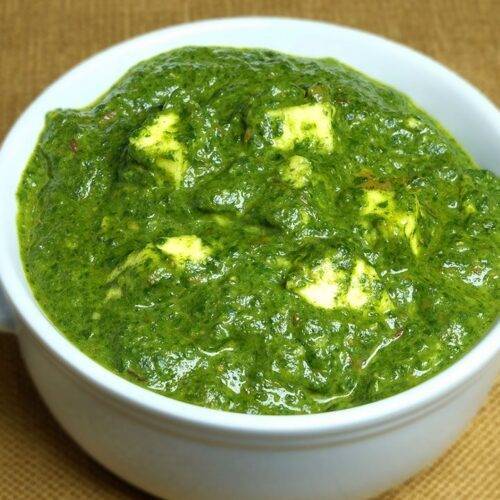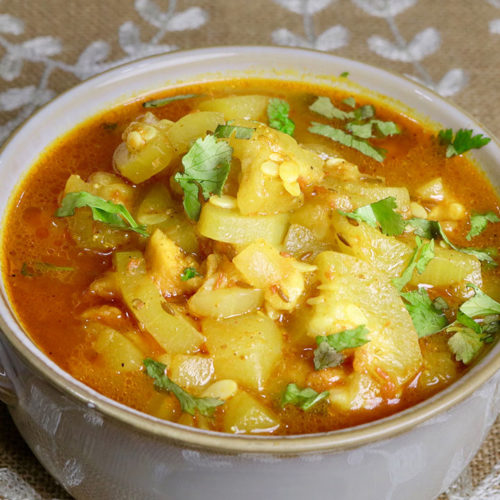Sweet and Sour Potatoes
Ingredients
- 10 small, boiled baby potatoes also known Ukrainian potatoes
- 2 cups 3 medium tomatoes chopped
- 2 tbsp oil
- 1 tbsp ginger thinly sliced, adrak
- 2 green chili sliced long ways; seeds removed
- 1/8 tsp asafetida, hing
- 1 tsp cumin seed
- 1/2 tsp black mustard seed, rai
- 1/2 tsp red chili powder, lal mirch
- 1/2 tsp fennel seeds powder, saunf
- 2 tsp crushed coriander, dhania
- 1/2 tsp turmeric, haldi
- 1-1/2 tsp salt
- 2 tsp cornstarch
- 2-3 tbsp sugar, adjust to taste
- 2 tbsp chopped cilantro, hara dhania
Instructions
- Boil the potatoes until they are tender, then peel and slice them into quarter inch-thick round disks.
- Heat oil in a saucepan. Test the heat by adding a cumin seed; if it cracks, the oil is ready.
- Add black mustard seeds, cumin seeds, and asafetida. Once the seeds crackle, add red chili powder, coriander, fennel powder, and turmeric.
- Stir briefly, then add chopped tomatoes and green chilies. Let the mixture simmer for 2-3 minutes.
- Add the potato slices.
- Cover the pot and cook for about 10 minutes over medium-low heat. Add sugar and cilantro. If the gravy becomes too thick, add water as needed. Cover and let it sit for a few minutes.
- Adjust the salt and sugar to your taste.
Notes
Sweet and Sour Potatoes: A Flavorful Fusion | Manjula’s Kitchen
If you’re looking to experience a delightful balance of sweet, spicy, and tangy flavors, the Sweet and Sour Potatoes recipe is just what you need. This dish, featuring tender potato slices cooked in a rich tomato-based gravy, offers an explosion of flavors in every bite.
The combination of sweet, sour, and spicy elements creates a unique taste profile that makes this dish stand out in the vast array of Indian cuisine. It’s a dish that not only satisfies the taste buds but also appeals to the senses with its vibrant colors and inviting aroma.
Cultural and Traditional Importance
While Sweet and Sour Potatoes may not be a traditional dish deeply rooted in Indian festivals, it showcases the creativity and adaptability of Indian home cooking. The use of Ukrainian potatoes, known for their ability to hold shape while absorbing the flavorful gravy, highlights the influence of global ingredients in modern Indian cooking.
This dish perfectly embodies the fusion of traditional Indian spices with a global twist, making it a popular choice for those seeking something different yet familiar. Its unique flavor profile resonates with those who enjoy experimenting with food while staying true to the essence of Indian culinary traditions.
In Indian households, the art of balancing flavors is a cherished skill, and Sweet and Sour Potatoes is a testament to that art. The sweet and tangy notes, combined with the warmth of spices, create a dish that is both comforting and exhilarating. It’s a dish that can easily become a staple in your home, whether you’re looking to impress guests with something new or simply wanting to enjoy a comforting meal with your family.
Recipe Variations
Though Sweet and Sour Potatoes are unique, there are other recipes on Manjula’s Kitchen that share a similar balance of flavors and can complement this dish:
Aloo Tamatar: A classic potato-tomato curry that offers a more traditional take on the combination of potatoes and tangy tomato gravy.
Aloo Baingan: This dish adds eggplant to the mix, providing a different texture and taste, while still maintaining the tangy notes from the tomatoes.
Paneer in Tomato Gravy: For those who enjoy the richness of paneer, this recipe offers a creamy tomato-based gravy that pairs wonderfully with the tender potatoes.
Aloo Chaat: A street food favorite, this dish provides a tangy and spicy flavor profile that complements the sweet and sour notes of the potatoes.
Health Benefits and Dietary Considerations
The Sweet and Sour Potatoes dish is not only a treat for your taste buds but also caters to various dietary preferences. It is both vegan and gluten-free, making it accessible to those with specific dietary needs. The use of Ukrainian potatoes or baby potatoes adds a good source of dietary fiber, while the tomato gravy provides vitamins and antioxidants.
This dish is a great choice for anyone looking to enjoy a flavorful meal without compromising on health. Additionally, the absence of dairy makes it suitable for those who are lactose intolerant or following a plant-based diet.
The incorporation of spices such as cumin, mustard seeds, and turmeric also adds to the health benefits of this dish. These spices are known for their digestive properties and anti-inflammatory effects, making the Sweet and Sour Potatoes not only delicious but also nourishing.
Serving Suggestions
Sweet and Sour Potatoes can be enjoyed in a variety of ways. It is often served as a side dish with Indian breads like puri or paratha, but it can also be the star of the meal when served over a bed of steamed rice. For a complete meal, pair it with Jeera Rice or Rotis. The vibrant colors and bold flavors make it a perfect dish to serve at a dinner party, ensuring that it will be a crowd-pleaser.
You can also serve Sweet and Sour Potatoes as part of a larger spread, featuring other complementary dishes such as Palak Paneer or Dal Tadka. The combination of these dishes creates a well-rounded and satisfying meal that showcases the diversity of Indian cuisine.
Conclusion
The Sweet and Sour Potatoes recipe is a wonderful example of how different flavors can come together to create something truly special. Its balance of sweetness, spiciness, and tanginess makes it a dish that is both comforting and exciting, perfect for any occasion.
Whether you’re serving it as a main course or a side dish, this recipe is sure to impress. Don’t hesitate to give it a try and experience the delightful fusion of flavors that this dish has to offer. The next time you’re in the mood for something new and flavorful, remember that Sweet and Sour Potatoes are just a few simple steps away.
Frequently Asked Questions (FAQs)
Can I use regular potatoes instead of Ukrainian potatoes?
Yes, regular potatoes can be used, but small baby potatoes are preferred as they hold their shape better in the gravy.
Is this dish suitable for a gluten-free diet?
Yes, Sweet and Sour Potatoes are naturally gluten-free, making them an excellent choice for those avoiding gluten.
Can I adjust the level of sweetness in the dish?
Absolutely, you can adjust the sugar according to your taste. Add it gradually until you reach your desired level of sweetness.
What can I serve with Sweet and Sour Potatoes?
This dish pairs well with Jeera Rice, puri, or paratha. For a more elaborate meal, consider serving it alongside other Indian favorites like Palak Paneer or Dal Tadka.
How do I store leftovers?
Store any leftovers in an airtight container in the refrigerator for up to 3 days. Reheat gently before serving to preserve the flavors and texture.

